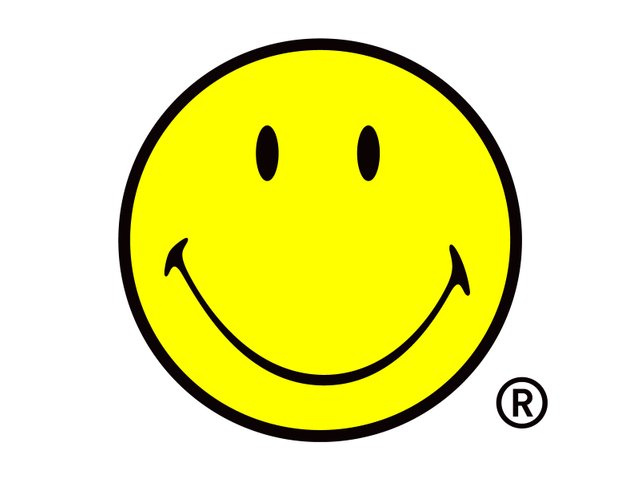Know the History of Your "Happiness" Emoticon

It took just ten minutes for Harvey Ball to make the Smiley confront. In 1963, the State Mutual Life Assurance Company in Worcester, Massachusetts, procured him to think of an outline that would help raise the resolve of its representatives. Ball was a craftsman formally instructed at the Worcester Art Museum School and a prepared sign painter. After he exhibited the Smiley confront, the organization paid him $45 for his work. Neither Ball nor the insurance agency took out a trademark. Before too long, a huge number of catches with the notable picture (two dark imprints for eyes and a dark smile on a brilliant yellow foundation) were available for use.
In the mid 1970s, the siblings Murray and Bernard Spain secured a trademark for a mix of the face with the expression "Have a Happy Day," later changed to "Have a Nice Day." The rest is history—pictures and adages that we are on the whole acquainted with. At last, in 1999, Ball made the World Smile Corporation to permit one variant of the picture. He utilized the returns to help enhance the lives of youngsters, and his child Charles said that his dad was not heartbroken that he profited off what he created. "He was not a cash driven person, he used to state, 'Hello, I can just eat one steak at any given moment, drive one auto at any given moment.'"
Ball kicked the bucket in 2001 at age 79, too early to witness the full blooming on positive brain science and satisfaction contemplates, insightful fields that join Eastern religions, neuroscience, developmental science, and behavioral financial aspects—however most importantly speak to a move of center among a few therapists from psychological maladjustment to emotional well-being, from gloom and tension to subjective prosperity.
His own particular duties underscore two key discoveries of positive brain research, experiences in view of science. Albeit some of these experiences were accessible before he passed on, it is improbable he thought about them—but then, he lived them. On the off chance that there was a minute when constructive brain research rose on the American scene with authoritative haul, it was in 1998, when University of Pennsylvania brain research teacher Martin Seligman conveyed the presidential address at the American Psychological Association, in which he characterized constructive brain science as "a reoriented science that underscores the comprehension and working of the best characteristics of an individual: good faith, boldness, hard working attitude, future-mindedness, relational ability, the limit with regards to joy and understanding, and social obligation."
Infrequently have scholarly discoveries so immediately impacted a culture. Some of this is occurrence, illustrative of how exploratory discoveries and social change happen all the while yet freely. In the mid-1990s, Oprah Winfrey reconfigured her show to move from an emphasis on individual issues to open doors for self-improvement. Positive brain science may have increased critical footing under various conditions, yet TV evangelism, TED talks, and the expansion of applications and sites committed to parts of positive brain science and self-change, alongside Oprah's endeavors, incredibly quickened and opened up the field's compass. Support from private establishments and government offices additionally helped dispatch, construct, and characterize their essence, inside and all the more quite outside college dividers. Thus, as well, did chances to spread joy by means of positive training and positive organization building.
While a few affirmations of positive brain science can be addressed—there are the individuals who say its professionals has moved too rapidly from test discoveries to striking attestations, and additionally those, depending on crafted by Marx and Foucault, scrutinizing its governmental issues—certain bits of knowledge are undoubtedly huge. Examinations underscore the association between physical wellbeing and mental prosperity, the significance of social connections, what we can (our points of view) and can't (our hereditary structure) control, and the advantages of character qualities, for example, coarseness and sympathy.
Ball's impact, as well, has been unavoidable. In January 2005, Time Magazine put various Smiley faces on its cover and reported that inside perusers could learn of "The Science of Happiness"— and answers to why hopeful people live more, regardless of whether God needs us to be upbeat, and if satisfaction is in our qualities. In January 2009, Psychology Today put a Smiley look on its cover, and reported that with the quantity of books on bliss developing from 50 distributed in 2000 to 4,000 distributed 8 years after the fact, a "satisfaction free for all" had arrived. "Thus," the main story guaranteed, "we report the surest approaches to discover prosperity." Then in July 2016 Time offered an uncommon version, on "The Science of Happiness" with no under 15 smiley faces—one with a radiance, one with two hearts, and one with a flickering eye. Inside were "NEW DISCOVERIES FOR A MORE JOYFUL LIFE," including an accentuation on connections, contemplation, and exercise.